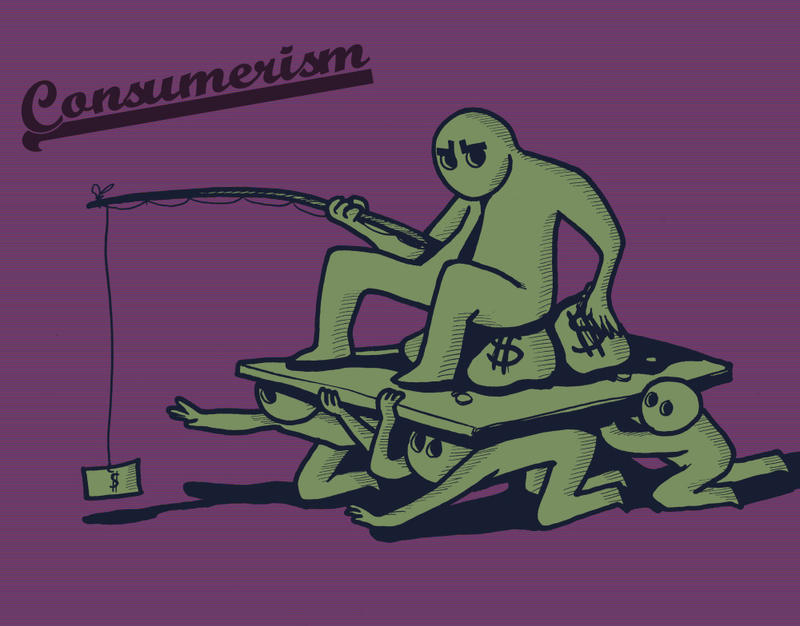During the next four weeks, I am partaking in the Fight Consumerism and Be Green Challenge. The rules I will attempt to follow will be not buying any new products and if I do decide to purchase something, it should be used. Although this does not include items like food, hygiene products, ect. I’m using working or in class so I rarely have time to shop aside from the times I go home for a long weekend or break so I do not think this will be that big of a challenge for myself. Although my former self was a shopaholic. I found myself buying things just to buy them or just because they were on sale. I ended up with a closet full of clothes with the tags still on since I never wore them and I created a vicious cycle of buying things I didn’t need, donating them and then shopping to reward myself for donating items. This is because buying things nowadays is so easy.
We live in a world where instant gratification is possible. We can easily buy the new latest gadget and the question is no longer “can we afford it? but do we really need it?” (Richardson). According to Jamie Anne Richardson’s article “Breaking the Consumer Addiction,” we live in a day and age where we do not even need to step foot into a store in order to consumer, we can shop from the luxury of our own homes in our pajamas on the internet. In fact, “we don’t even have to have a credit card handy with PayPal” (Richardson).
Purchasing things are very convenient as well as cheap today. When I would walk into a Forever 21 and see a $5.00 blouse, I never thought that the cheap price actually paid with a very hefty price of of an overworked and underpaid employee. The article in our reader “Santa’s Sweatshop,” goes over the the concept of subcontracted labor. Many companies use subcontracted labor because it is cheaper and since the laborers are not directly under them, they “do not have any control” over what happens to the laborers. When are are exploited, the big name brands cannot be held accountable for any of the mistreatment of the laborers. The whole concept of this became real to me when we watched the film “Made in L.A.” in class because I was not just reading about this a topic but I got to see the faces and hear the stories of these women who were being exploited by Forever 21. It was upsetting to watch but very necessary to realize that injustices are real and we as consumers are a part of it BUT can stop it. Each time you purchase a $3.00 scarf you are support the mistreatment of these people and in order to stop this, we can first off, stop shopping there and then educate others about what is happening.
I don’t mean to end on a cynical note, but it is not likely there will be any change because people still want $7.00 dresses, and because this does not directly affect them, it is so much more convenient and easy to turn their heads the other way.
Works Cited
Inside Source Made in L.A. PBS, 2007. DVD.
Inside Source Holstein, Palmer, Ur-Rehman and Ito. "Santa's Sweatshop: In a Global Economy, It's
Hard to Know Who Made Your Gift-- And Under What Conditions." Reader.
Outside Source Richardson, Jamie Anne. "Breaking the Consumer Addiction." Huffington Post. N.p., 27 Mar. 2012. Web.

No comments:
Post a Comment